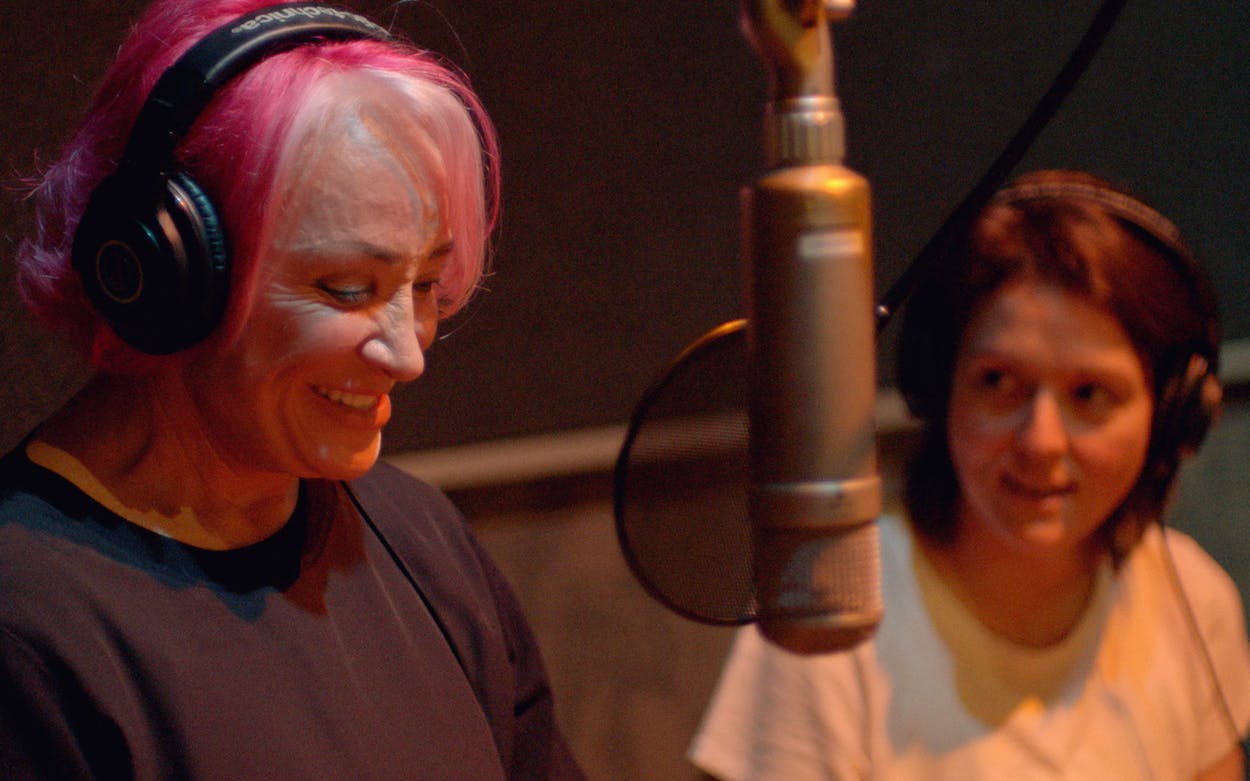Film screenings at SXSW usually adhere to a very strict schedule, but Wednesday’s showing of the documentary The Return of Tanya Tucker—Featuring Brandi Carlile started fifteen minutes late. Turns out that was the best way for the film to kick off. Not only did it give the audience another quarter hour to pump ourselves up with the Tanya Tucker hits playing over the Paramount Theatre’s speakers, but the tardiness was also thematically appropriate. To truly understand the artistry of Tanya Tucker, and the grit and passion that have made her one of the most compelling singers in country music history, you need to get comfortable with a little bit of chaos.
The Return of Tanya Tucker is not a biography. The documentary doesn’t fixate on the beats in the life of the music legend, who became one at just thirteen years old when her 1972 single “Delta Dawn” peaked at sixth on the country music charts. The film opens with a quick montage of those beats to acquaint the unfamiliar with Tucker: her impoverished but love-filled childhood in Texas and Arizona; the massive success of her teen years; the scandals of her wild young adulthood; the subsequent decades of financial, professional, and personal ups and downs; and the ten-year break between her 2009 album, My Turn, and her return to the studio to record the 2019 album While I’m Livin’, which would ultimately win Tucker her very first Grammy at the age of 61.
The latter album, which was produced by Shooter Jennings (Waylon’s boy) and Brandi Carlile (a country music powerhouse in her own right), is the true subject of the film. Director Kathlyn Horan’s cameras are in the studio from day one, documenting as Jennings and Carlile try to ease an occasionally reluctant Tucker back into the spotlight. Carlile is the heart of the documentary. She is a Tucker superfan, bestowing effusive praise upon her idol at every turn. Her face maintains a constant wide-eyed disbelief, as if the greatest success of her career is this opportunity to write and record with Tucker. Carlile sits next to her as she sings into the microphone, watching closely as Tucker pours emotion into a song in a way that’s easy to see and feel through Horan’s lens but nearly impossible to explain.
Lord knows Carlile tries. She pontificates constantly on what makes Tucker such a dynamic singer. In one moving scene, Tucker laments that she never learned to play guitar or any other instrument, that she was “just” a country singer. In response, Carlile wonders if that focus is the secret of Tucker’s vocal prowess. If she had been distracted by an instrument onstage, would she have been able to use her whole body in her singing, to emote so ferociously? Tucker seems cheered up for a moment, although she’s too self-deprecating for the mood to last.
In her fervor, Carlile is the audience’s surrogate—or at least it felt that way for those of us in the crowd at the Paramount. Twice in the film, Tucker is seen in the studio as she closes out a song. The camera is beguiled by the movement of Tucker’s mouth and the tensing muscles in her neck. Both times, the audience cheered loudly when she finished singing, as if we were at a concert and not an intimate documentary screening in a sparsely filled Austin theater.
When introducing The Return of Tanya Tucker, SXSW film head Janet Pierson said the festival programmers are besieged by music documentaries each year. “They’re almost all the same,” she said. But this one, which has been acquired by Sony Pictures Classics, stood out. It’s not about child stardom, or substance abuse, or money troubles, or even overcoming obstacles. It’s about artistry, and the intangible things that are expressed through Tanya Tucker’s voice, a voice so powerful it turned a little girl into a country music legend. Even now, with the voice deepened and grizzled with age and cigarette smoke, it’s as compelling as it ever was.
You may leave the documentary with some questions about Tucker, so you’ll have to do some internet research when you go home. But if you’re like me, you’ll be happy to. I read her Wikipedia while listening to “Delta Dawn,” “Texas (When I Die),” “Trail of Tears,” and “Bring My Flowers Now.”
- More About:
- Music
- Documentary
- Country Music








